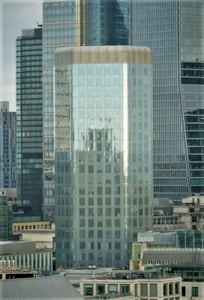Caledonia Mining Corporation plc (LON:CMCL) is the topic of conversation when WHIreland’s Analyst Paul Smith caught up with DirectorsTalk for an exclusive interview.
Q1: Paul, you published a note on the pricing of Gold over the last couple of days, what kind of changes have you noted in the price?
A1: The gold price has been one of the bright spots of the current crisis in our view. The price was already rising, before Corona virus took hold, from mid-2019 on geopolitical and trade concerns, but has since carried on its upward trend and is now comfortably sitting above $1,700/oz – an increase of +30% YOY. The impetus now being with gold a safe haven and with every expectation that the money printing presses will be turned on to rescue the global economy in the coming recession. We do not know where the price will stop and will be keeping a keen eye on developments as the year progresses.
Q2: What effect is this having on gold mining companies?
A2: The effect of this price rise on gold companies has been extraordinary. An investor in a leading, producing gold company (in the UK or elsewhere) 12 months ago would, on average, have seen their investment double today (+100%). We stress this is an average for the peer group we look like and there are obviously individual circumstances within that group but overall valuations have improved markedly.
There has even been a rise in the valuation of the gold exploration equities on average with more interest in those companies seeking to discover the next generation of gold mines. This is a welcome return to interest in this sector, which had been starved of capital.
Q3: Are there any negative effects?
A3: There are very few negative effects for the industry of a rising commodity price environment! Most gold mining companies will report strong profits and cash flow generation and, we expect, an increase in dividends back to shareholders. We would expect gold mining companies to resist ‘expensive’ M&A this time around at this part of the cycle. In previous high price periods we have seen a significant price paid for equity which has led to large write-downs on the other side – we expect that companies should be more restrained this time around.
Q4: Looking forward, what indicators should we be looking out for that will affect Gold prices?
A4: A negative indicator for gold will be a better than expected economic recovery or a less severe recession – both of which will not be fully determined for quite some time. We expect the printing of paper assets, aimed at reducing the economic damage, to ensure a higher gold price for longer, and also to reset the base that the gold price could fall in the next downturn.
Q5: Of the companies you look which looks best placed to benefit from the strong price increase ?
A5: While we only look carefully at a small subset of the market, the company that has most benefitted from the sustained gold price increase has been Caledonia Mining Corporation which is in the final stages of a funded expansion at its Blanket Gold mine in Zimbabwe. The completion of the Central Shaft later this year will see the ability for the company to raise production to over 80koz by 2021 and make full use of the defined resource at depth in the middle of the mine. This low cost and productive mine has been the mainstay of the company for over a decade now with the cash flow from the mine funding its own expansion as well as paying for a company dividend. The increased gold price will bring forward higher cash flows which we in our view will enable higher, progressive dividends as well as allowing Caledonia to pursue M&A opportunities in wider Zimbabwe.
Caledonia Mining Corporation plc is a profitable cash generative gold producer with a strong growth profile, Caledonia’s primary asset is the Blanket Mine in Zimbabwe which produced 54,512 ounces of gold in 2018 at an All in Sustaining Cost of $802/oz.











































